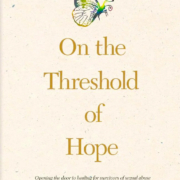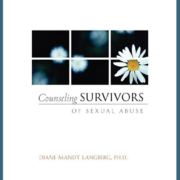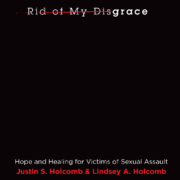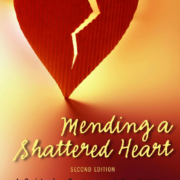 This book is written by one of the leaders in the Christian community when it comes to understanding and counseling childhood sexual abuse (CSA). While Langberg speaks to survivors in this volume, it is also helpful reading for called workers, friends, relatives—anyone who is serving as a support system for those who have been affected by the sin of CSA.
This book is written by one of the leaders in the Christian community when it comes to understanding and counseling childhood sexual abuse (CSA). While Langberg speaks to survivors in this volume, it is also helpful reading for called workers, friends, relatives—anyone who is serving as a support system for those who have been affected by the sin of CSA.
Langberg not only has 25 years experience (as the book’s writing) of counseling CSA survivors, she also has a deep understanding of Scripture and a profound appreciation for the healing power of God’s Word.
Throughout the book she points to the Savior, Jesus Christ, not only as the Redeemer who lived for us and died for sin, but also as One who understands the pain of abuse. She writes,
You live in a world where you have encountered evil people. So did he. Some of you have known violence because of other’s twisted need to gratify themselves. So did he. He, too, has encountered darkness, chaos, and trash. He went to hell—the place of greatest darkness and chaos. He who is sovereign over all knows what it is like to have hideous things happen and not be in control. He who is our refuge knows what it is like to be unprotected, not only from the fury of the enemy but also from the wrath of God. He knows what it is like not to get what you need. He had no place to sleep. He who created food and water went hungry and thirsty (p. 165).
As the author walks the survivor through the healing process, she make it clear that the road to recovery is long and painful. Yet as the title implies, she indicates that there is a hope. This books helps survivors finds such hope, practically and spiritually.
If this sin has affected you, read this book. If you are a pastor, teacher, or staff minister, read this book. If you have a friend or family member who is helping someone who was sexual abused as a child, read this book. If you are a Christian counselor or social worker, read this book. You will learn what not to do and also what you can do to help victims of CSA become survivors.
Also see: Counseling Survivors of Sexual Abuse
Buy Now
Author: Langberg, Diane Mandt.
217 pages
Reviewed by: John D. Schuetze on July, 2015



 Dr. Langberg is one of the leading figures in the Christian community when it comes to counseling childhood sexual abuse. At the time when she wrote this book she had about twenty-give years of experience in counseling those who have been sexually abused as children. She not only understands the process of helping victims become survivors, but she addresses it from a Christian perspective. What is more, she is able to connect with the counselor and offer valuable and practical insights about what to do and not do to help victims. Even though much new information has been discovered and added to the field of trauma counseling in the past several decades, this book still has much to offer.
Dr. Langberg is one of the leading figures in the Christian community when it comes to counseling childhood sexual abuse. At the time when she wrote this book she had about twenty-give years of experience in counseling those who have been sexually abused as children. She not only understands the process of helping victims become survivors, but she addresses it from a Christian perspective. What is more, she is able to connect with the counselor and offer valuable and practical insights about what to do and not do to help victims. Even though much new information has been discovered and added to the field of trauma counseling in the past several decades, this book still has much to offer.


 A Guide for Partners of Sex Addicts
A Guide for Partners of Sex Addicts